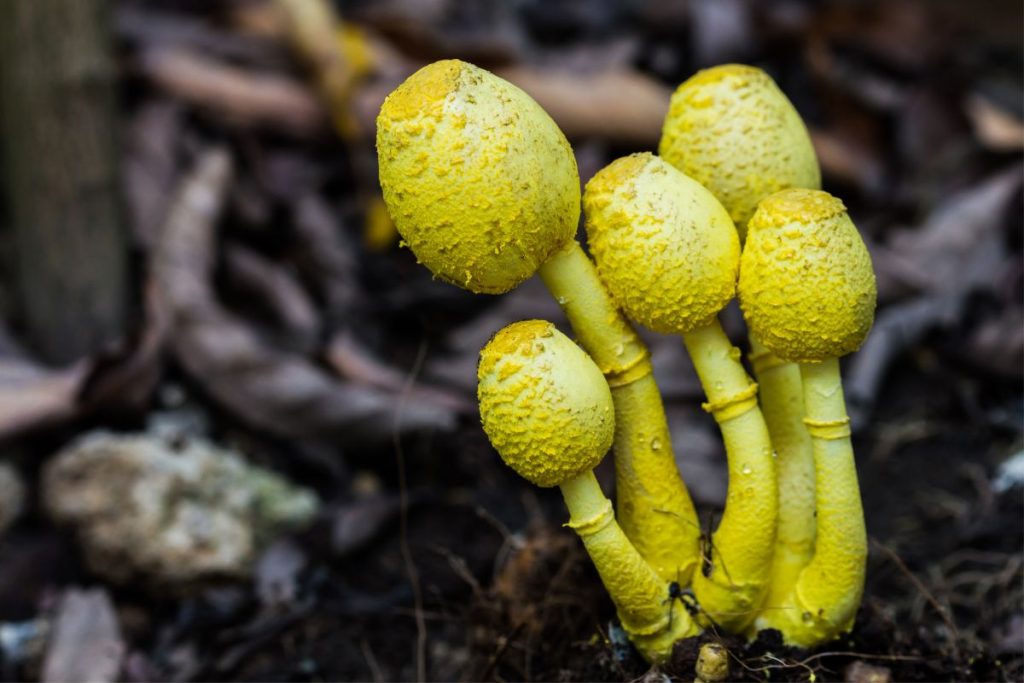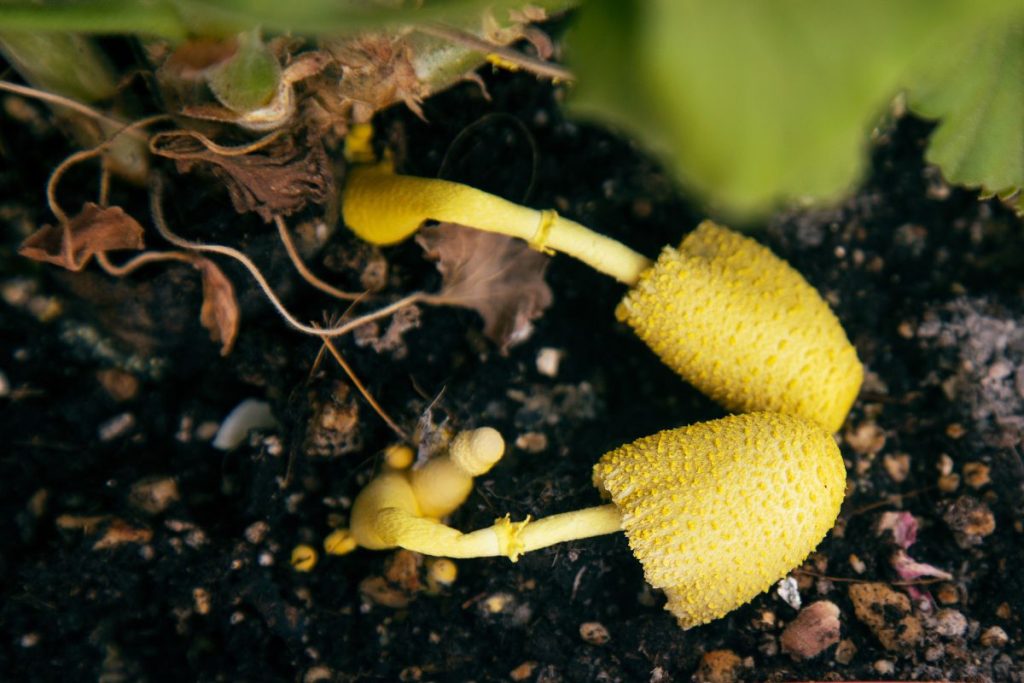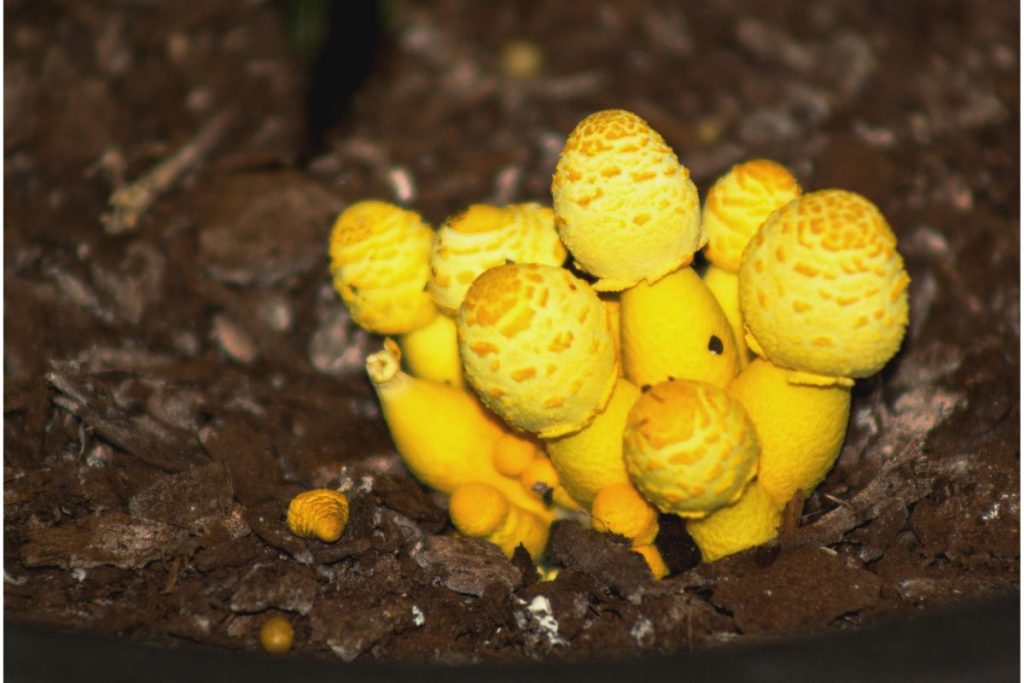You may be wondering why mushrooms have started appearing in your house plants and if they’re dangerous. Don’t worry – while mushrooms are a bit of an unwelcome surprise, there are steps you can take to get rid of them and prevent them from reappearing. In this article, we’ll explore the causes of mushroom growth in house plants and provide tips on how to safely get rid of them.

Contents
Why Are Mushrooms Growing In My House Plants?
You may be wondering why mushrooms are growing in your house plants. The answer is typically due to a fungus that is present in the soil of the houseplant. The most common mushroom found growing in houseplants is Leucocoprinus birnbaumii, which can have either a balled or flat cap depending on maturity. The spores of this fungus can be introduced into the environment by contaminated soilless mix, through airborne movement, or even on clothing. Mushrooms tend to appear during summer months when conditions such as warm, moist and humid air are available for them to thrive.
Overwatering your plants can also lead to an ideal environment for mushroom growth as they love moisture and wet soil. It’s important to take preventative steps like avoiding contaminated soil mixes, eliminating excess watering and ensuring adequate air circulation around your houseplants to reduce the chances of mushrooms appearing in your home garden.
Related Post:
Can I Use Garden Soil For Indoor Plants?
What Causes Mushrooms to Grow?
Moisture, a fertile potting mix and mushroom spores all contribute to the growth of fungi like mushrooms. To make sure your house plants stay safe from these unwanted visitors, it’s important to understand why they grow in the first place.
Mushrooms need moisture to germinate and grow, so if you have an area that is particularly humid or damp in your home, this could be a contributing factor. Additionally, if you’re using a potting mix with high levels of nutrient content such as peat, then this can provide an ideal environment for the spores to take hold and form mushrooms. Peat is also degradable over time – meaning it provides food for microorganisms which can further feed fungi like mushrooms.
Are The Mushrooms Dangerous?
Different kinds of mushrooms may be toxic to humans and animals if eaten, so caution should be taken when handling them. The most common houseplant mushroom is Lepiota lutea (also called Leucocoprinus birnbaumii), often referred to as yellow parasol or yellow houseplant mushroom. It has a bright yellow 1-2 inch diameter cap which turns white and expands to release the spores and may grow singly or in clusters. While these mushrooms don’t pose any risk to your plants, they can cause mild gastrointestinal distress if ingested. If you have children or pets that might eat them on accident, it’s best to remove the mushrooms right away and throw them out in the trash.
It’s also important to keep houseplants out of reach for kids and animals who could come across the mushrooms while playing with or exploring their plants. Don’t leave them sitting around where they can accidentally ingest them – take proper precautions by removing any visible mushrooms before they become a problem. To ensure everyone’s safety, it’s good practice to inspect your houseplants regularly for any signs of mushroom growth that could potentially be hazardous if consumed.
How To Get Rid Of Mushrooms In House Plants

Scraping the top of the soil and replacing it may help reduce the number of mushroom spores, but they could still regrow. To get rid of mushrooms in house plants, you should try a few different methods:
- Remove the caps:
- Removing them as soon as possible will stop spores from spreading.
- Doing this will also help keep mushrooms away from other houseplants.
- Scrape the soil:
- Take off 2 inches (5 cm.) of soil from the pot and replace it.
- The fungus may come back, so be prepared for mushrooms growing again.
- Change the soil:
- Be careful not to damage your plant’s roots when changing out all of its soil.
- Rinsing or washing away old soil may not be enough to remove all traces of fungus.
Lastly, drenching the houseplant’s soil with fungicide might work after several applications, but it can also harm your plants if done too often or with too much product. If you want to avoid using chemicals altogether, consider changing conditions such as temperature and humidity to make it less hospitable for mushrooms to grow in your houseplants’ soils instead. Remember that mushrooms won’t hurt you unless eaten!
How To Stop Mushrooms From Coming Back?

To prevent mushrooms from returning, you’ll need to take some steps to keep the soil dry and make conditions less hospitable for them. Check your soil regularly and remove mushrooms before they become big enough to produce spores. This will help slow down the spread of fungi. Additionally, adding a layer of fine gravel on top of the soil can create an inhospitable environment for mushrooms. You can also try sprinkling cinnamon on top of the soil as this natural fungicide may help discourage them from growing back.
Be aware that perfect prevention is impossible when it comes to wild mushrooms in house plants. Moisture is necessary for your plants’ survival, so don’t overwater but don’t let them go completely dry either. Fertile soil is also essential for plant growth, so be sure to feed your plants regularly with fertilizer or compost if needed. Lastly, keep in mind that microscopic spores are present everywhere and are impossible to prevent or eliminate entirely.
In most cases, it’s best just to remove any existing mushrooms as quickly as possible and follow proper watering practices rather than worrying too much about preventing their return altogether. Safety should always come first when dealing with these wild fungi, so use gloves when handling them or wear a mask if you’re prone to allergies or sensitivities. Remember that even though they may look unpleasant, wild mushrooms are generally not dangerous when handled correctly and can often be beneficial for your garden in the long run!
Conclusion
You’ve now taken the steps to rid your house plants of mushrooms and ensure they don’t come back. You’re like a gardener, pruning away what doesn’t belong so that your house plants can thrive. With these tips, you can trust that your home will stay free from mushroom growth. Now it’s time to sit back and watch your plants grow healthy and strong—just as they should be!
